Squared drawbore pegs that work like real ones
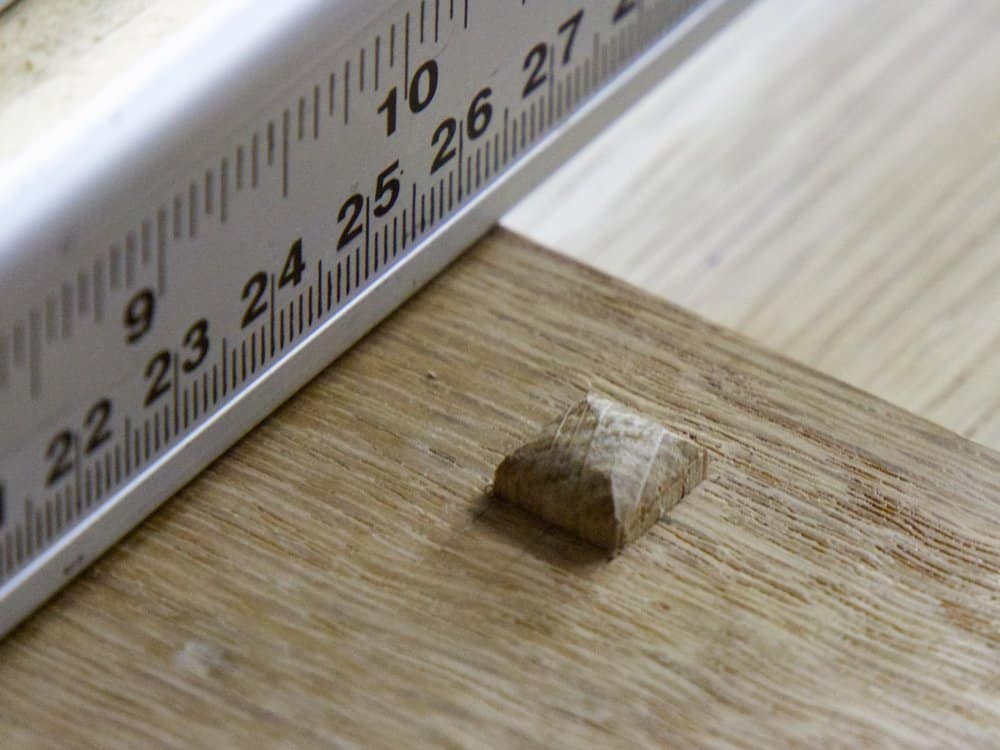
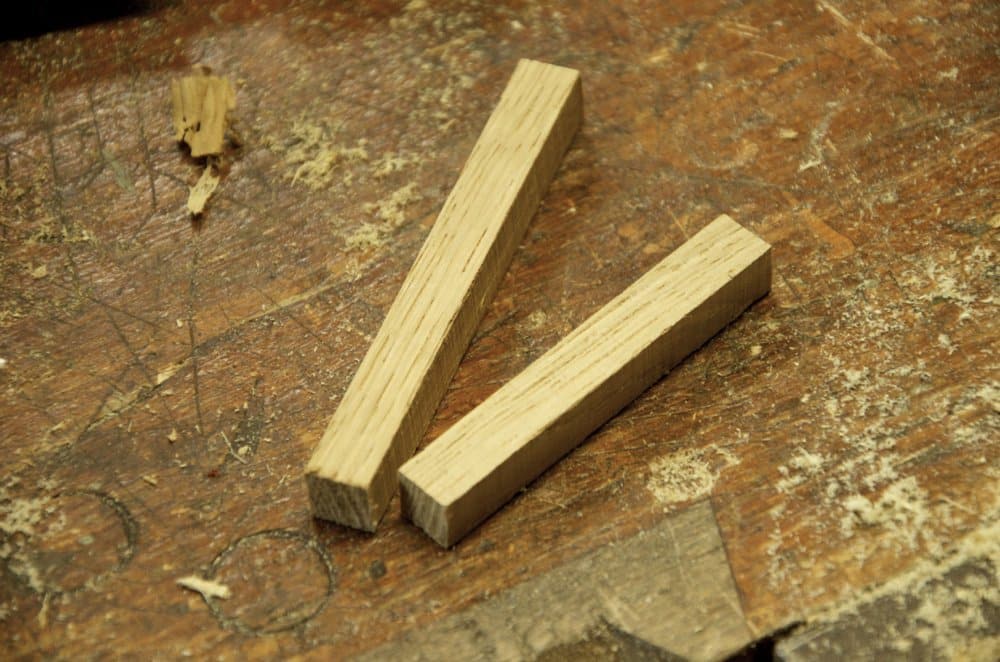
Cut a 45-degree cut on each of the corners but not too deep. The distance from the end depends on how deep you can cut the square recess into the mortise piece. 3/16″ is deep enough but deeper works well if the mortise piece is from thicker wood.
Pare down the corners to the shoulder at 45-degrees and along the full length.
The blank will now look like this.

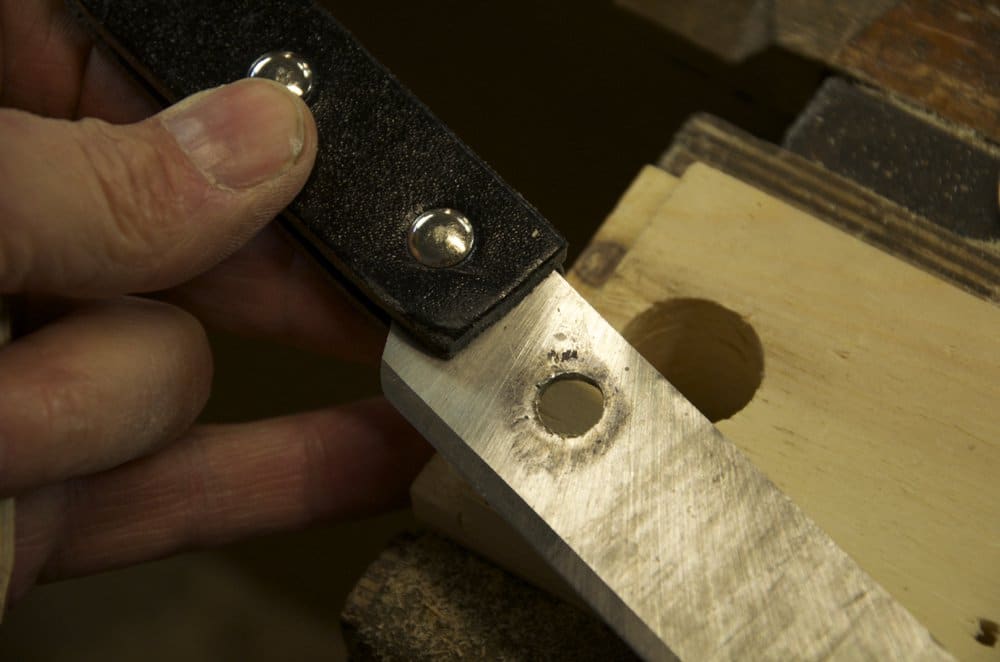
I used a rasp to rough out the rounded corners…
…and then finishing them off with a flat file.

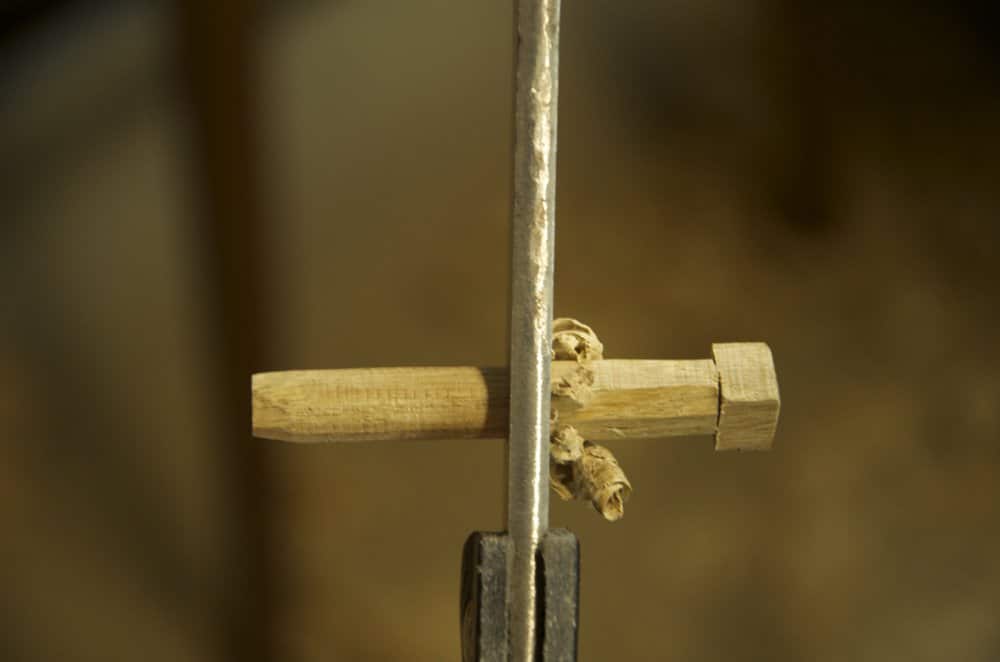
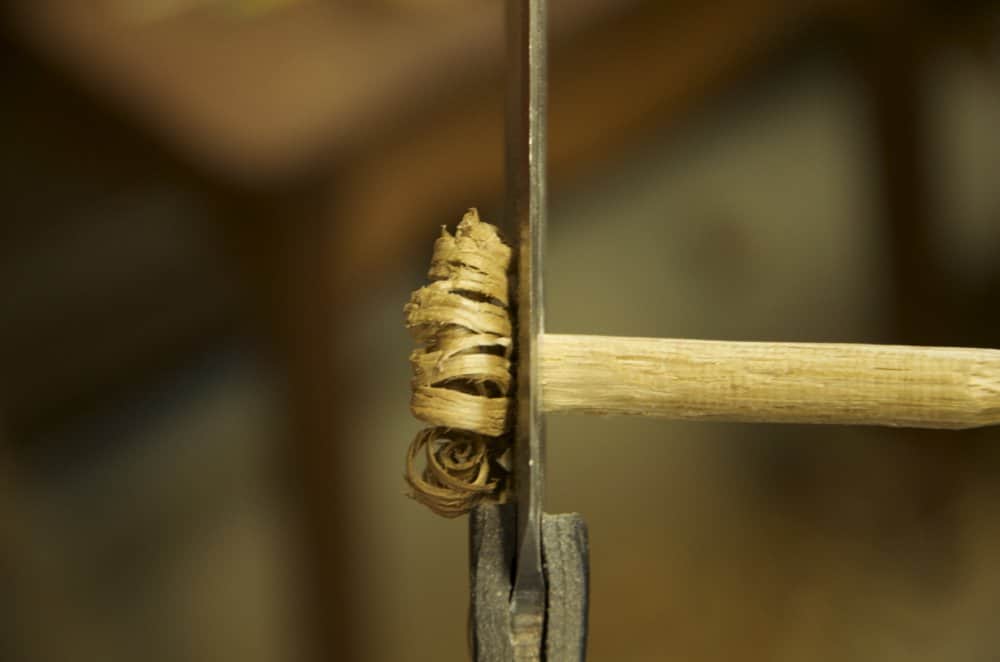
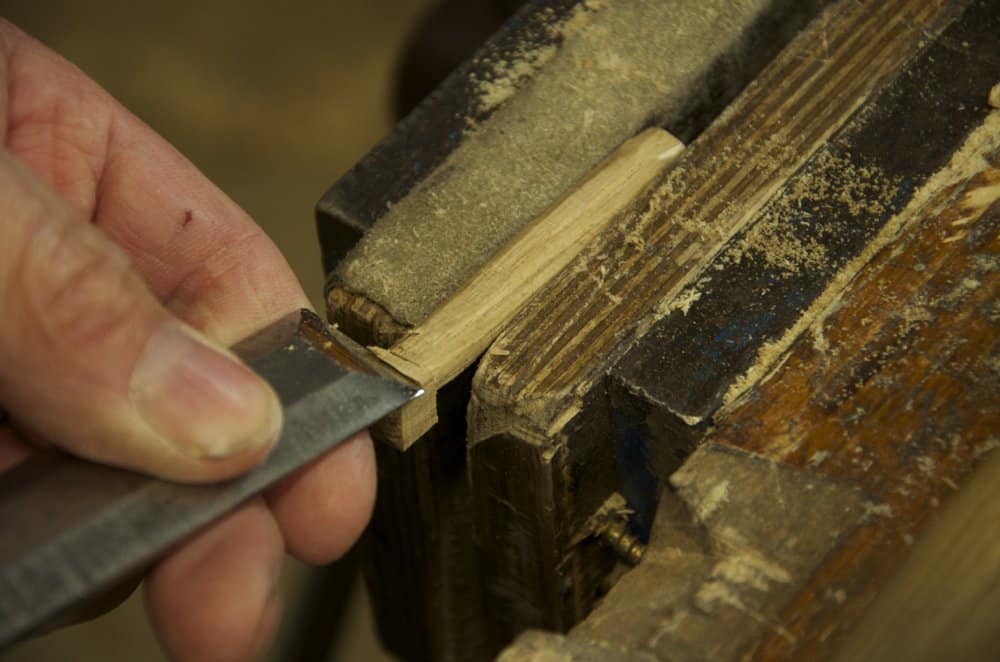


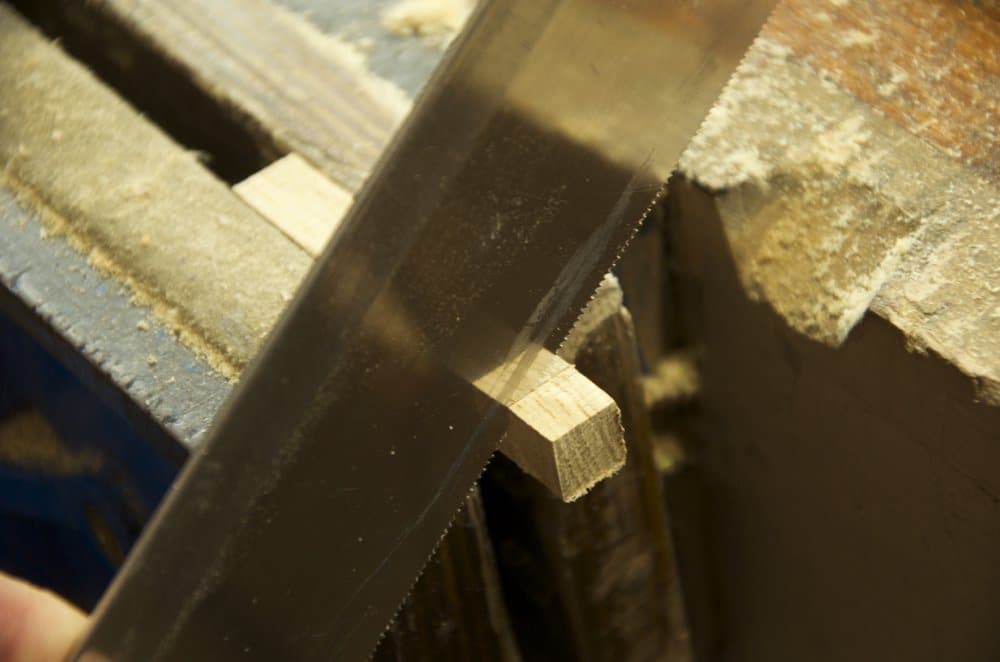
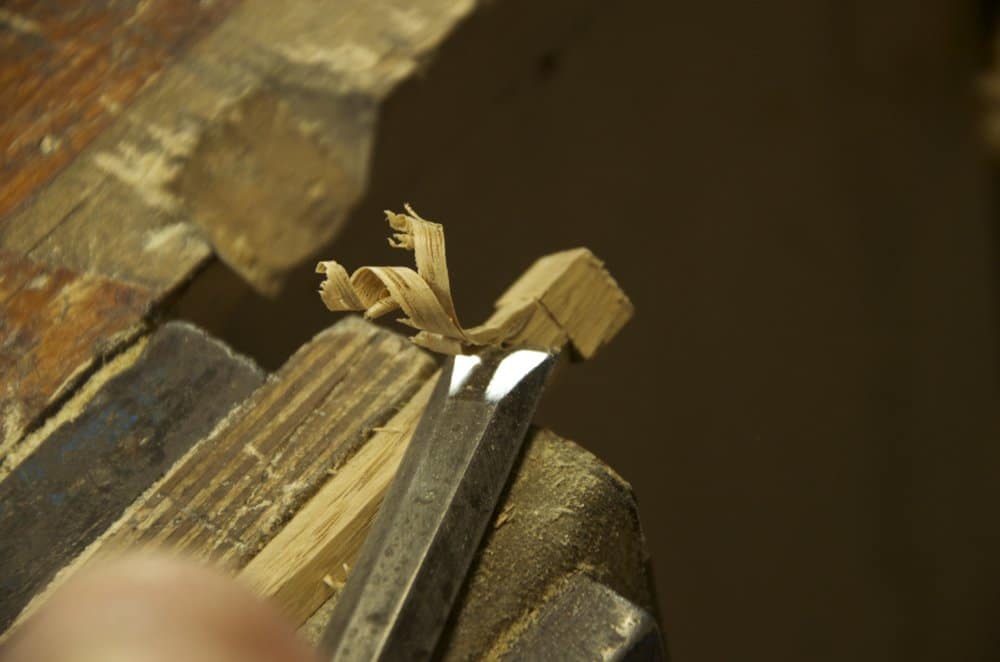

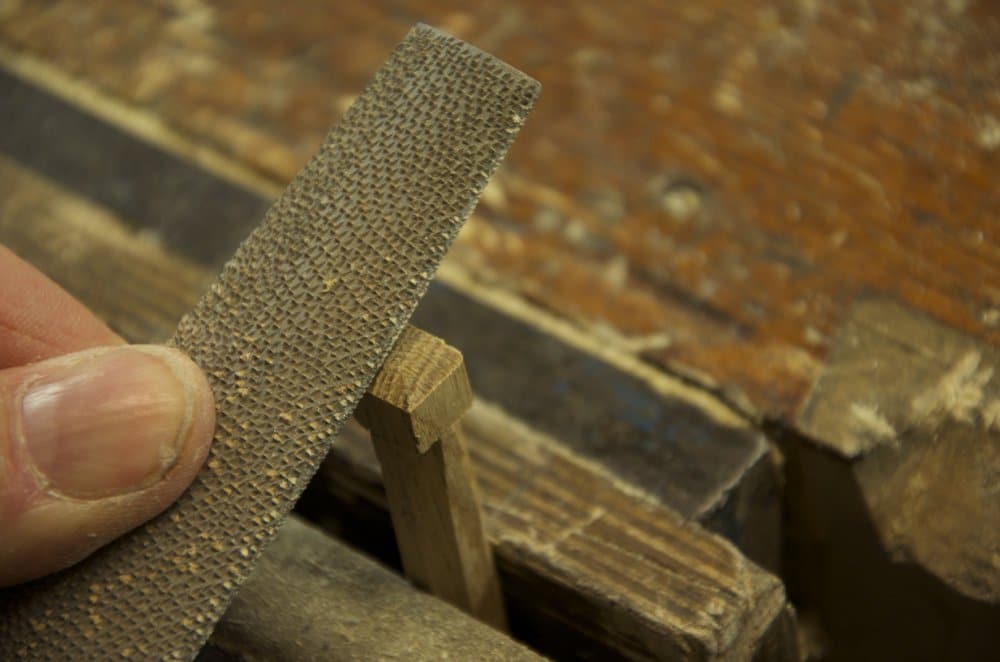

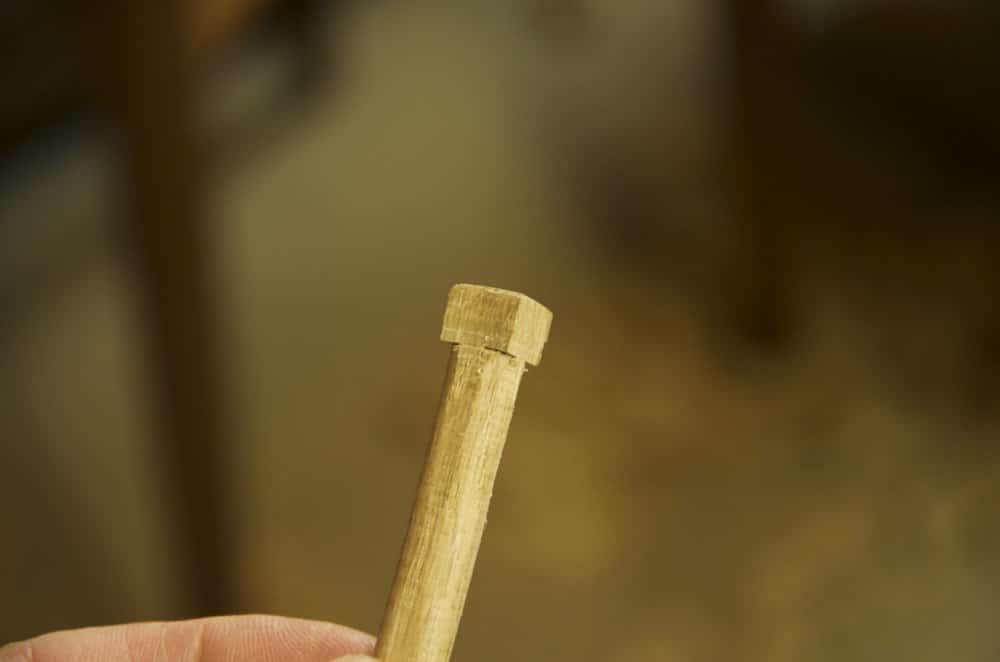
Very nice!
very very cunning.mr sellers is a true craftsman,
i find it very hard to watch other peoples videos now.you can tell that they really have no experience in the craft,have read an article then post a video try to come off as all experience and authoritative.
nearly every other person on youtube are just plain copying pauls videos.
example here
https://www.youtube.com/watch?v=hMzKhzUOiZY.
it seems that these so called gurus cant think for themselves.
surely there should be some copyright infringement.
theres also someone with a youtube account called woodworkingmasterclasses.
it makes my blood boil when i see them blatantly copying you paul.
but i guess thats what happens when you go against the grain and become a trend setter.
id just like to say that they can never be compared to you and your team.
thanks for everything you do.
I wouldn’t worry about it, Russell. It happens all the more. First I look at the hands. Are they working hands and have they worked for a living.
Imitation is the sincerest flattery. I am thinking of doing the odd you tube video but I will be acknowledging my sources…
Jack
Sir;
Wow, that’s really neat. I like the looks and pristine quality of draw-born mortises and would like to do more of them. I’ve had mixed success. May I ask a couple of questions about that?
It seems you used seasoned wood. Are there real differences when using draw-bored mortises in green or seasoned wood?
Were the pegs you used heated/dried, that is bone dry?
Did you glue them? Is it necessary to glue them in seasoned wood?
It looks as though the squared ends would be likely to chip (and I see you rounded the tops -I’m guessing for the hammer and eased the bottoms -to decrease the chance of chipping?) when driving them home. As these are about 3/16″ OD, with a flat fore end, is it possible to back them out, in the event of a split or chipped head?
Do these want to be driven smoothly, slowly, or quickly?
Is a metal face best for driving these?
Thank you for thinking to share some of these ancillary techniques.
All the Best,
Casey
I could answer all of your questions but the best thing to do is to make the M&T joint and then make the rest and try it on a trial piece for yourself. Its good to learn from and quicker than me writing the answers. Enjoy!
You’ll make apprentices of us all, Paul!
That’s half the fun of it. I waste a lot of wood, but it’s a fun ride learning what end is up.
Sir;
I may have overreached and for this I apologize.
All the Best,
Casey
Not at all, Casey. I enjoyed reading your questions and seeing the concerns–very enlivened and enlivening. I rarely refer to my work as fun because it’s work to me and always it’s been work, but I understand when people say this or that is fun, but I always want to provoke people to do it for themselves and experiment, think through the processes and such. It’s fun taking this through all the steps to the end result and seeing it work instead of just reading what PS says that’s all.
Paul it was a good exercise to follow your technique here and I wanted to add that I have had some success with chucking the squared draw bore peg head up in a drill motor and carefully ‘drilling’ the blank into a dowel plate hole to remove the corners.
I recently signed up for your premium master classes and your videos are high quality, show close ups of exactly what I want to see in a close up, and your instruction is superb. My woodworking has benefitted a lot.
I appreciate the input. I try to dismantle any unnecessary use of machines and so I did wonder if it’s worth introducing a machine to something so simple?
For me it was worthwhile to use the drill motor only in so far as that I could better get the blank to go straight into the hole (my blank I would guess was a bit too thick).
Over the last couple years of Sundays I took community education classes where the table saw was the center piece of the shop. I made simple projects appropriate to my skill level. My interest though was to accomplish the same at home solely with hand tools. Because the heart of it for me is not with machines, my heart is with hand tools where everything seems more real to me.
I love the idea of draw bore dowels and have used them a bit. I also like the square protruding bit but I think it may not be that critical to round off the dowel perfectly especially if you use a hard woord dowel into a softwood M&T joint? Wouldn’t the chisel pearing be enough?
Could someone Tell me if the square holes in the mortices are done with a chisel the size of the square head pegs, or is there an old vintage tool for that? Bravo Mr. Sellers! Love your book!